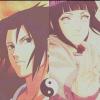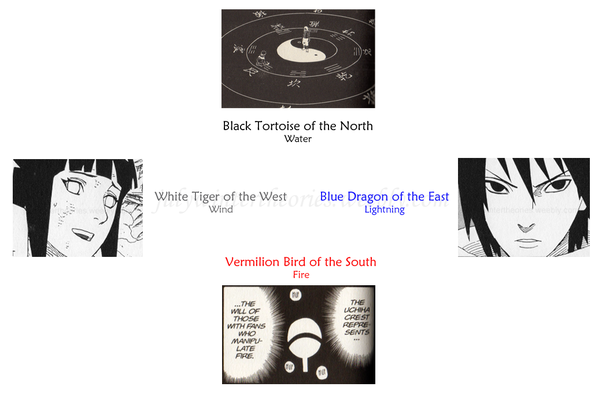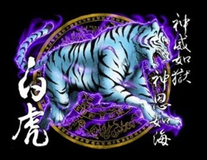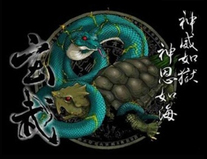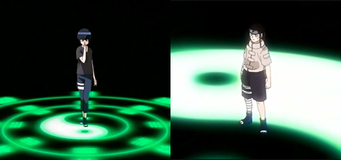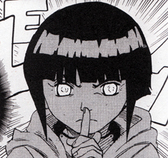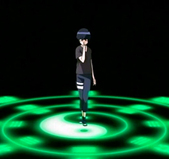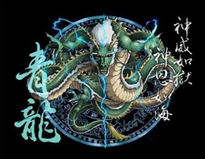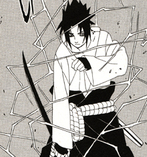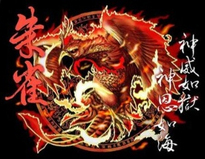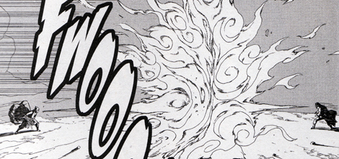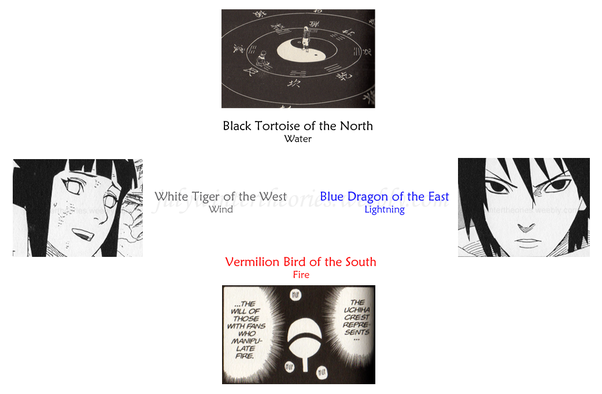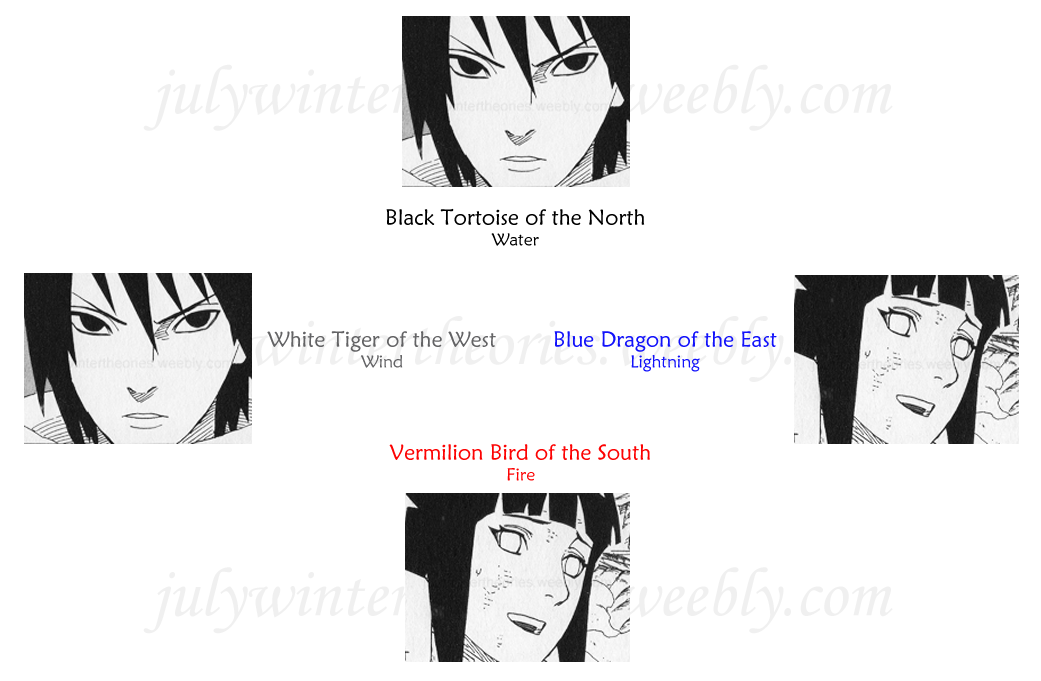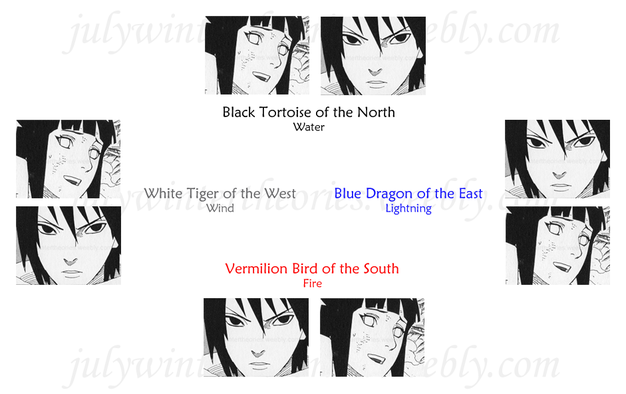Important Notes: This theory is based on the Guardians of the Four Directions from Chinese philosophy. Each special creature represents a compass direction, color, season and an element among others.
*The Five Elements from Naruto use Wind and Lightning in place of Metal and Wood, respectively. To avoid confusion, an attempt to associate Sasuke and Hinata will be done using Naruto elements instead. A more detailed explanation may be read on Naruto x Sasuke: Bonds.
*The Five Elements from Naruto use Wind and Lightning in place of Metal and Wood, respectively. To avoid confusion, an attempt to associate Sasuke and Hinata will be done using Naruto elements instead. A more detailed explanation may be read on Naruto x Sasuke: Bonds.
Assumption
Metal = Wind ; Wood = Heaven / Lightning
Metal = Wind ; Wood = Heaven / Lightning
The Five Elements based on Chinese philosophy:
... > Metal > Wood > Earth > Water > Fire > ... (cycle)
... > Metal > Wood > Earth > Water > Fire > ... (cycle)
The Five Elements based on Naruto:
... > Wind > Lightning > Earth > Water > Fire > ... (cycle)
... > Wind > Lightning > Earth > Water > Fire > ... (cycle)
The White Tiger and the Black Tortoise
The White Tiger and the Black Tortoise are associated to Yin.
Byakko, the White Tiger
Image Source: taxuezhai.blog.sohu.com
- guardian of the West
- element of *Wind
The White Tiger is believed to be the Lord of the Mountains and is King of all Animals. It crouches in the dark, keen and its true powers hidden.
Tiger eyesight is one of the most accurate in its league. Generally, the eyes have two light-sensitive cells - the cones (enables one to see color) and rods (enables vision in light or dark conditions). Having more rods than cones, Tigers therefore have good vision even with little light; they also have the ability to bulge their eyes, allowing them to gain better view of their surroundings. For this very same reason, however, Tigers can see very little color. Few of which include glowing colors of blue, green, yellow and various hues of gray only.
The Hyuga Byakugan share similar characteristics. When this kekkei genkai is activated, the iris bulges, allowing the user to see far distances and depths as well as increase the ability of insight. The user's vision also shifts to hues of gray except for glowing colours of chakra.
Tiger eyesight is one of the most accurate in its league. Generally, the eyes have two light-sensitive cells - the cones (enables one to see color) and rods (enables vision in light or dark conditions). Having more rods than cones, Tigers therefore have good vision even with little light; they also have the ability to bulge their eyes, allowing them to gain better view of their surroundings. For this very same reason, however, Tigers can see very little color. Few of which include glowing colors of blue, green, yellow and various hues of gray only.
The Hyuga Byakugan share similar characteristics. When this kekkei genkai is activated, the iris bulges, allowing the user to see far distances and depths as well as increase the ability of insight. The user's vision also shifts to hues of gray except for glowing colours of chakra.
Genbu, the Black Tortoise
Image Source: taxuezhai.blog.sohu.com
- guardian of the North
- element of Water
The Hyuga are close combat fighters. When an opponent happens to be within the range of their divination, Hyuga attacks are most likely successful. The Hyuga divination field appear to be the Bagua (eight trigrams) with the taijitu symbol at the center.
In ancient China, the first Bagua inscriptions were said to have been found on the back of a Tortoise. Tortoise shell divination use Tortoise shells in foretelling the future.
Literally, the Hyuga divination field looks like the carapace of a Tortoise. And foretelling the future may be parallel to the ability of the Byakugan to predict an opponent's next move.
The Tortoise and the Serpent
Ancient China also believed in the non-existence of male Tortoises.
Hence, the Tortoise (as female) is sometimes paired up with the Snake (as male counterpart).
Although there appears to be more complicated hand seals depending on its use, the simplest hand seal for activating the Byakugan is by the right index serpent seal.
The Tortoise and the Crane
A Japanese proverb says that the Tortoise and the Crane are symbols of long life.
It is common in Buddhist art to see a Crane standing on a Tortoise, usually as decoration in temples.
When a Hyuga is standing, somewhat on top of the (Tortoise shell) divination,
see how Hinata can epitomize as a Crane, while Neji as a caged one.
Wind and Water
The Hyuga are yet to show any elemental affinity, if at all. However, the Hyuga divination field is similar to the Bagua, the ultimate device in Chinese geomancy (feng shui, literally Wind Water). Wind and Water are believed to direct qi (energy): Wind carries energy, representing the principle of change and transformation and Waterwithholds energy, representing stability and inner strength.
Hinata may be associated to Wind and Water in a more passive approach (non-elemental form in Naruto; Yin is passive).
The Blue Dragon and the Vermilion Bird
The Blue Dragon and the Vermilion Bird are associated to Yang.
Seiryū, the Blue Dragon
Image Source: taxuezhai.blog.sohu.com
- guardian of the East
- element of Lightning*
The Blue Dragon (may also be Green) is believed to be a deity of the Heavens and is a symbol of the Emperor's Power. In art, dragons are depicted with clouds or Water, as they are said to be the harbingers of storm. Despite this close relation, the Blue Dragon, however, does not have elemental affinity with Water.
The portrayal of Sasuke as a Dragon may be epitomized by his elemental affinity with Lightning,
a natural weather phenomena commonly accompanying storms.
It has also been shown that the Uchiha train with Fire techniques near a body of Water;
however, they do not generally have elemental affinity with the latter.
Obito Uchiha as Ryujin, the Dragon God/King
Ryujin (also known as Watatsumi), is the Dragon God/King of the sea who lived in Ryūgū-jō. He is usually depicted as an old man carrying the tide jewel (used to control tides) in his hands. Sea turtles, fishes and jellyfishes are some of his notable servants.
Madara Uchiha was considered to be the leader of the Uchiha clan prior to his defection from them. He was presumed dead after his battle against Hashirama Senju (Shodaime Hokage). After which some time, Obito Uchiha takes on Madara's identity and later became the Mizukage of the Hidden Village in Mist in the Country of Water. He was leader of Akatsuki, wearing the ring 玉 on his left thumb. 玉 can means “king” in shogi or “jewel/precious stone.”
Obito may be associated to sea creature-characters, both of whom are from the Hidden Village in Mist:
- the Three-Tailed Beast which he helped capture, a monster with the body of a turtle and shrimp-like tails
- Hoshigaki Kisame (鬼鮫, demon shark), who recognized Obito as the Mizukage and stayed loyal to him even up to the event of his death
Suzaku, the Vermilion Bird
Image Source: taxuezhai.blog.sohu.com
- guardian of the South
- element of Fire
Similarly, the Uchiha have elemental affinity with Fire.
Sasuke may also be associated to birds through Chidori (literally, a thousand birds), Cursed Seal transformation (where he possessed avian characteristics) and Taka (literally, hawk), the second name of his team and his ability to summon a hawk.
In contrast to Hinata, Sasuke may be associated to Lightning and Fire in a more active approach (elemental form in Naruto; Yang is active).
4th Character Official Databook
online leak: first week of November 2014
Important Note: Only Four elements appear in the diagrams below because the Yellow Dragon of the Center does not have a Japanese equivalent. Where necessary, the Earth element is directed at the Center.
Based on the 4th Character Official Databook, characters have gained chakra nature types with polarities which may theoretically compensate for what they lacked previously.
Theoretical (Pre-Databook 4)
Databook 4
Sasuke, predominantly Yang, later gained Yin; Hinata, predominantly Yin, later gained Yang.
Superimposing both diagrams may lead to:
*It should be noted that, if anything, Sasuke matches Naruto more than any other character.
The Chinese mythology introduced the Four Celestial Emblems, four special creatures representing a compass direction, color, season, an element and virtue among others. * Byakko, the White Tiger

- guardian of the West
- represents the season autumn/fall
- element of Metal (heaven/sky in Japanese mythology; lightning in Naruto)
- virtue of righteousness

- guardian of the North
- represents the season winter
- element of Water
- long life and happiness

- guardian of the East
- represents the season spring
- element of Wood (wind in Japanese mythology and in Naruto)
- virtue of appropriateness and conformity to tradition

- guardian of the South
- represents the season summer
- element of Fire
- knowledge
images are from http://kaneko.yuudachi.net/
There are some ambiguities (White Tiger and Kirin, Tortoise and Serpent, Red Bird and Phoenix, etc.) which I shall attempt to explain.
There will be two parts of this theory:
Part One: The White Tiger and the Blue Dragon Part Two: The Black Tortoise and the Red Bird
Each part will discuss how Sasuke and Hinata may portray these creatures in Naruto.
Note that the White Tiger and the Black Tortoise represent characteristics of yin; while the Blue Dragon and the Red Bird represent characteristics of yang. 1.

The first part of this theory deals with the possible portrayal of Byakko, the White Tiger by Hinata and Seiryuu, the Blue Dragon by Sasuke in Naruto.
The White Tiger and the Blue Dragon are the ancient symbols of yin yang. Although the metal White Tiger is yin, and the wood Blue Dragon is yang, note a reversal in elemental affinity:
Yin represents water, wood (wind) and earth; Yang represents fire, metal (also sky/heaven or lightning)
However confusing, this type of reversal is common in I Ching.
-----
The White Tiger is believed to be the Lord of the Mountains and is King of all Animals. It crouches in the dark, keen and its true powers well hidden.
Tiger eyesight is one of the most accurate in its league. Generally, the eyes have two light-sensitive cells - the cones (enables one to see colour) and rods (enables vision in light or dark conditions). Having more rods than cones, tigers therefore have good vision even with little light; they also have the ability to bulge their eyes, allowing them to gain better view of their surroundings. For this very same reason, however, tigers can see very little colour. Few of which include glowing colours of blue, green, yellow and various hues of gray only.

Byakko, the White Tiger, is the ancient symbol of Yin (yin yang).
The White Tiger is also portrayed (not at all times) to have flames on certain parts of its body, usually the shoulders.

 Whether the Hyuga is indeed symbolized by the flame (the same symbol is very common throughout the Country of Fire), it is noticeable that only Hinata seems to wear it – on the sleeves of her former jacket.
Whether the Hyuga is indeed symbolized by the flame (the same symbol is very common throughout the Country of Fire), it is noticeable that only Hinata seems to wear it – on the sleeves of her former jacket.
More often, Hinata fits the description of Yin as well as other symbolisms.
? White Tiger and Kirin ?

The Kirin, which often appears tiger-like in artwork (see photos below), is a different creature entirely from the White Tiger. The Kirin is said to have the body of a deer, the tail of an ox, the hooves of a horse, a body covered with the scales of a fish, and a single horn. The Kirin appears only before the birth or death of a great and wise person. Said to live in paradise, the Kirin personifies all that is good, pure, and peaceful; can live to be 1,000 years old. *
-----
The Blue Dragon (may also be Green for the colour of spring), on the other hand, is believed to be a Deity of the Heavens and is a symbol of the Emperor's Power. In art, dragons are depicted with clouds or water, as they are said to be the harbingers of storm. The dragon is said to live in a palace (ryugi) located in the depths of the waters of Ryukyu Islands (Okinawa). Despite it's close relations to water, the Blue Dragon, however, does not have elemental affinity with water.
The metal elemental affinity of the Blue Dragon is likened to the white sheet of metal, often by a shield or sword. In Sasuke's case, this may be epitomized by the kusanagi.

Sasuke's chidori and chidori nagashi, share strong resemblance with lightning, which is a natural atmospheric electric discharge accompanying storms.


Finally, it has been shown that Uchiha training with katon jutsus were performed near a body of water; however, they do not seem to have elemental affinity with the latter.
----- * resource: Shijin
Random notes:
White Tiger - note the ivory color of Hinata and Neji's top outfits; the Hyuga banner outside their compound is white
Blue Dragon - anybody else who's bluer than Sasuke?; the Uchiha banner outside their compound is blue
----- 2.

The second part of this theory deals with the other possible portrayal of Genbu, the Black Tortoise by Hinata and Suzaku, the Red Bird by Sasuke in Naruto.
-----
The Hyugas are close combat fighters. When an opponent happens to be within the range of their divination, Hyuga attacks are most likely successful. The Hyuga divination field appear to be the ba-gua, or eight trigrams, with the taijitu symbol at the center. The flag of South Korea is quite similar, only having four trigrams instead of eight.


Literally, the divination field looks like the carapace of a tortoise; but in ancient China, the first ba-gua inscriptions were said to have been found on the back of a tortoise. Tortoise shells were then used for divination or foretelling the future - also called tortoise shell divination.
This is similar to the ability of the byakugan to predict an opponent's next move. Indirectly, Neji makes predictions of situational outcomes as well.
The Black Tortoise has elemental affinity with water. It is said to live underwaters but rises about every few hundred years to see the sun.

The Black Tortoise is also known as the Black Warrior of the North. More often, some say that the Guardian of the North is actually a Tortoise and an intertwined Serpent; few say a Crane standing on a Tortoise.
Ancient China believed that there were no male tortoises. Thus female tortoises were left to pair with the Serpent.
The hand seals for activating the Byakugan shows that although long hand seal methods are different for Hinata and Neji, both end in the serpent seal; it's short method is simply the right index serpent seal.

Simply picture Hinata and her (tortoise shell) divination, simultaneously performing the (right index) serpent seal to activate her byakugan. ? The Tortoise and the Crane ?

When a Hyuga is standing, somewhat on top the (tortoise shell) divination, see how Hinata can represent a crane; Neji a caged crane.
-----

Feng Huang is actually a union of the male (feng) and the female phoenix (huang). Today, the phoenix is solely considered as female and is often paired with the male dragon. Although both may be rivals and enemies, the symbol of the phoenix and the dragon in Chinese weddings represent blissful marriage.

The Feng Huang is believed to have dominance over all birds. A possible reason for associating the name of Sasuke's technique, chidori, with birds.
A very common portrayal of the Feng Huang is that with outstretched wings, a snake in its talons. In chapter 344 of the manga, Sasuke told Orochimaru: "You'll have your chance to fly, Snake... in the talons of a hawk."*

A hawk is not a phoenix but the Red Bird has its ambiguities.

-----
* This may also be a representation of another Japanese mythological bird-like creature, the tengu.
**If you find this confusing, you might want to check the other rings of Akatsuki members. Five - Itachi included - would represent the Celestial Emblems.
Random notes:
Black Tortoise -- represents winter; Hinata was born in the same season. This may explain why she always wore a jacket.
Red Bird -- represents summer; Sasuke and Neji were born also in the same season. They wore turtle-neck, short-sleeved shirts and bermuda shorts. I'm not sure if these may be considered summer outfits; just pointing out similarities.


